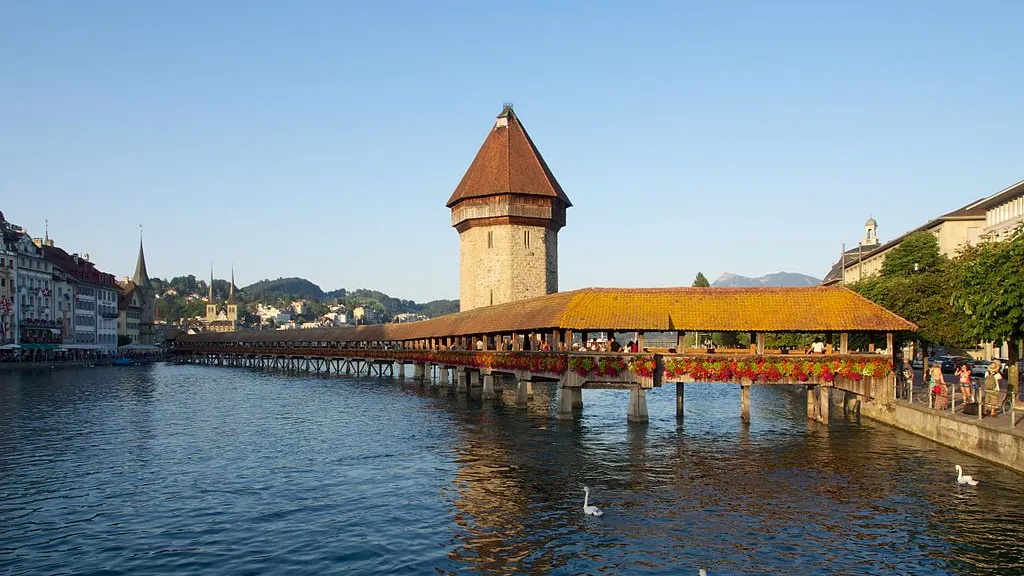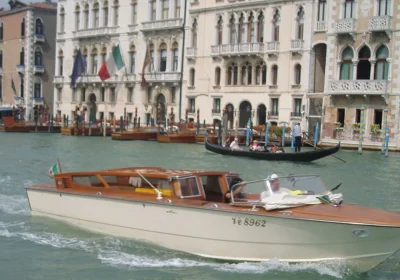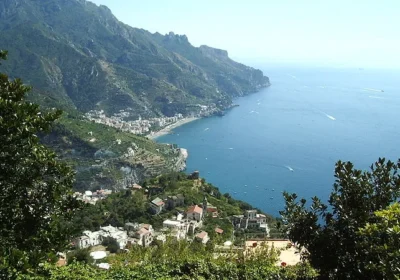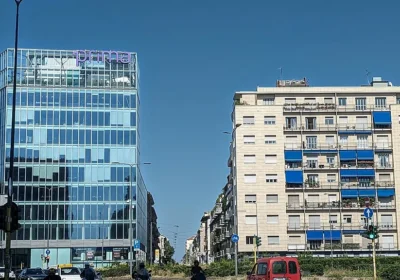Luzern (German: Luzern) is a city on the shores of Lake Lucerne. It is the capital of the German-speaking canton of the same name and the administrative district of Lucerne. Lucerne was the first city to join the Swiss Confederation and is now famous, among other things, for the legendary Wilhelm Tell. It is here that the famous story of the boy and the apple unfolded.
Located in the heart of Switzerland, Lucerne embraces all the country’s charms – a picturesque winding lake with rocky shores, high mountains with snow-capped mountains, and ancient “gingerbread town” architecture. Everyone will find something to their liking in this town: old painted houses, medieval wooden bridges and fortress walls are waiting for the lovers of antiquity, numerous hiking trails, skiing and sledging are waiting for the supporters of active recreation, romantic promenade and cosy restaurants are waiting for lovers, cruises along the most picturesque places of the lake are waiting for the lazy ones.
DESCRIPTIONS:
Kapellbrücke is an ancient wooden bridge. The bridge was built in 1333 and is the oldest wooden bridge in Europe. Under the roof of the bridge there are more than 100 paintings by Heinrich Wegmann, dedicated to the most significant moments in the history and mythology of Switzerland. On 18 August 1993 there was a fire on the bridge and many of the paintings and the bridge were badly damaged. The bridge was rebuilt, but you can still see the charred, blackened paintings. They were left unrecovered to commemorate the loss. The octagonal tower of the bridge has been preserved in its original form. In its time it served as an armoury and a prison.
Spreuerbrücke – “chaff bridge” – is the second ancient wooden bridge. A little further away than the Kappelbrücke, a little smaller, a little darker and a little younger. The bridge was built in 1408, a small chapel in honour of the Virgin Mary was added in 1568. The paintings were created in the 17th century by the artist Caspar Meglinger and all have a single motif, the Dance of Death. It is an allegorical subject from the Middle Ages, symbolising death and the frailty of human existence.
St. Peter’s Church (St. Peters-Kirche) – the Franciscan church is the oldest in Lucerne, built in 1178.
The Old Town Hall (Altes Rathaus) – this Renaissance building was built in 1602. It has interesting stonework, a huge roof and a tall rectangular tower. The tower served as an excellent observation point for the crowds in the market square, where a sort of fair was held on Tuesday and Saturday mornings.
The Dying Lion Monument (Löwendenkmal) – carved into the steep rock is the figure of a lion, an allegorical representation of the bravery of the Swiss Guards who bravely died at the Tuileries in Paris in 1792, saving the honour and dignity of French Queen Marie Antoinette. The monument was created by the outstanding Danish sculptor Bertel Thorvaldsen in 1821.
MUSEUM
Alpineum (Alpineum) – It is a 3D panorama of the Alps. The museum is located next to the sculpture of a dying lion. The museum presents in 3D the most beautiful mountain peaks of the country: Pilatus, Rigi, Jungfrau, Matterhorn, Gornergrat, Mont Blanc, Mont Rose. You can enjoy the full effect of a walk through the mountains without leaving the city centre.
The Ice Garden (Gletschergarten) is a museum created by nature itself. It was opened in 1872 and is direct evidence of the existence of a glacier in this area 20,000 years ago. A journey back in time takes you from subtropical palm trees to the ice-covered Ice Age, you will see shells and palm leaves that are about 20 million years old. The exhibition is accompanied by various multimedia performances. The museum is easy to find – it is located next to the sculpture of the Dying Lion.
The Swiss Transport Museum (Verkehrshaus der Schweiz) is one of the largest such museums in Europe. Several pavilions dedicated to air, rail, water and road transport are spread over a huge area. The most interesting is the pavilion with trains, where you can clearly trace the history of railway transport in Switzerland and in the world.
EXCURSIONS:
Mount Pilatus is a mountain overlooking Lucerne. You can get there by the world’s steepest cog railway, or by a 3-step cable car. It’s a really worthwhile trip that will give you a real insight into the rocky and wild mountains called the Alps.
Mount Rigi is one of the most famous mountains in Switzerland and is located just outside of Lucerne. There are several ways to get there, either by train via Vitznau, or by a couple of lifts from Veggis.
Cruise on Lake Lucerne – this lake is considered one of the most picturesque Swiss lakes. You will have the opportunity of a 3 hour ride on a comfortable ship, admiring the beauty of the mountains. Usually such ships have a restaurant, and if you buy a first class ticket, you will have free internet and a view from the top deck. The pier is just opposite the railway station, where you can check the timetable and buy your ticket.

















